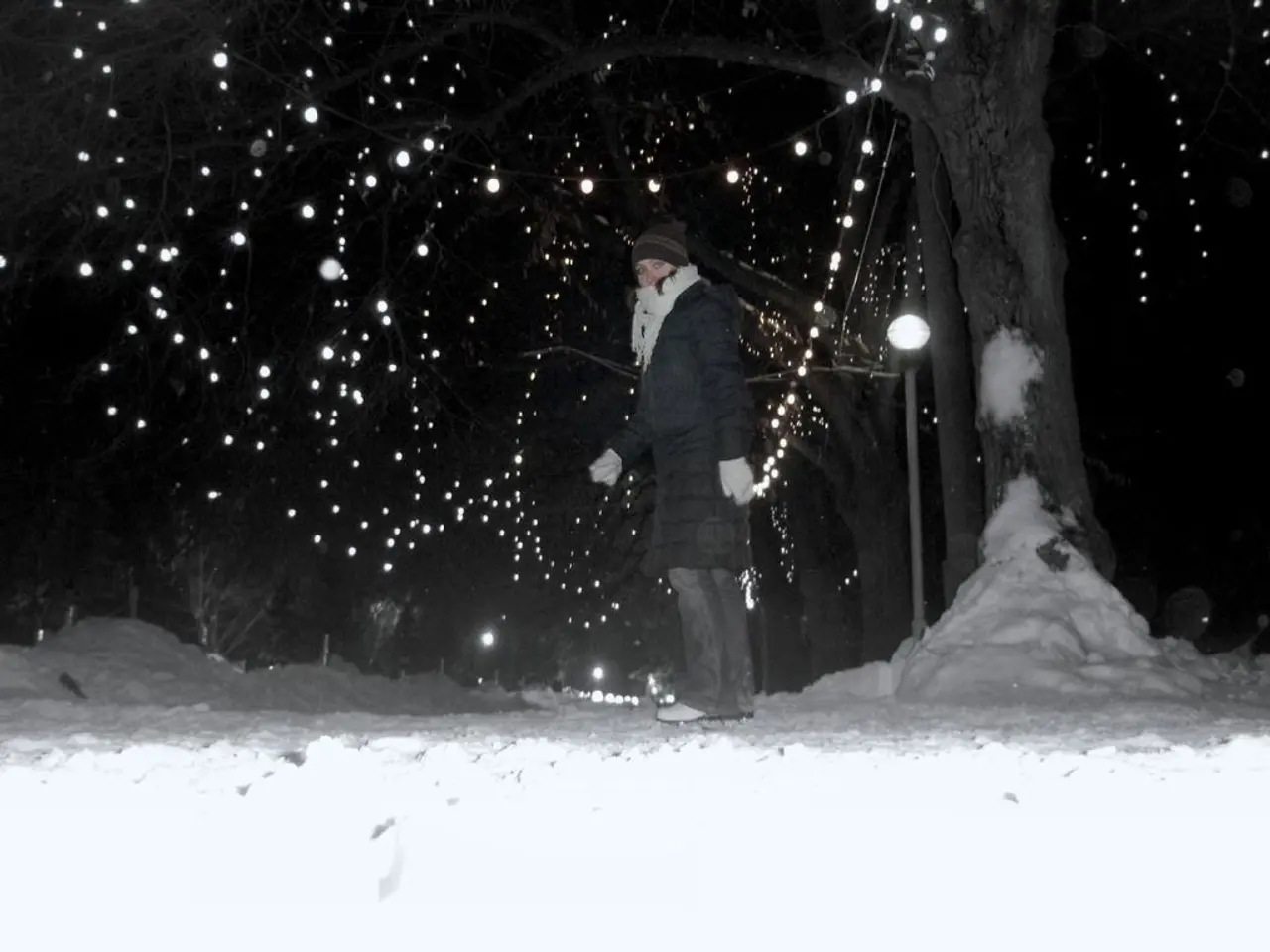Seasonal Affective Disorder (SAD) Exploration: Symptoms, Causes, and Remedies
Seasonal Affective Disorder (SAD), a type of depression that affects people living in countries farther from the equator, is primarily triggered by reduced sunlight exposure during the winter months. This is due to the notably shorter daylight hours and less natural sunlight in these regions, which disrupts biological processes critical for mood regulation and overall mental health.
The condition affects approximately 5% of people in the United States, according to the National Institute of Mental Health (NIMH). One of the key ways reduced sunlight exposure contributes to SAD is by disrupting the body's circadian rhythm, the internal clock that controls sleep-wake cycles. This disruption can lead to symptoms such as late sleep onset and daytime fatigue, which are common in SAD.
Another significant impact of reduced sunlight is an imbalance in melatonin, a hormone that regulates sleep and wakefulness. Lower sunlight exposure increases melatonin production during the day, leading to excessive sleepiness and lethargy. This imbalance can exacerbate depressive symptoms.
Sunlight also plays a crucial role in the production of serotonin, a neurotransmitter essential for mood stability and happiness. Reduced sunlight lowers serotonin levels, worsening mood and increasing the risk of depression in winter months. Additionally, lower sun exposure decreases Vitamin D synthesis, which also plays a role in mood regulation.
Living farther from the equator can increase the risk of developing SAD due to the combination of circadian disruption, hormonal imbalances, and neurotransmitter deficiencies caused by insufficient sunlight during winter months.
Treatment for SAD often involves light therapy, which simulates natural sunlight exposure to reset circadian rhythms and improve mood by addressing these underlying physiological disruptions. Psychotherapy, such as cognitive behavioral therapy (CBT), can also help people monitor and control their reactions to certain situations and environments more successfully.
In severe cases, the Food and Drug Administration (FDA) has approved bupropion (Wellbutrin XL) for specific use by people who have SAD. Bright light therapy can also be recommended for severe symptoms that impact daily function.
A healthcare professional will diagnose SAD if a person has symptoms of major depressive disorder that develop and resolve at specific times each year. Symptoms of SAD include anxious feelings, feelings of guilt and worthlessness, stress and irritability, difficulties in making decisions, reduced concentration, consistent low mood, reduced libido, restless activity, crying, feelings of fatigue, sleep disturbances, increased appetite, social withdrawal, and suicidal ideation.
Experts are still unsure of the exact causes of SAD, but studies have pointed to reduced serotonin production during winter and disrupted melatonin levels as potential factors. People with a history of depression or bipolar disorder, as well as those who currently have either of these conditions, are more likely to develop SAD.
Increasing exposure to natural sunlight, maintaining regular exercise, and a balanced, nutritious diet may help alleviate symptoms of SAD. If you suspect you may be suffering from SAD, it is essential to seek help from a healthcare professional for an accurate diagnosis and appropriate treatment.
[1] National Institute of Mental Health. (n.d.). Seasonal Affective Disorder. Retrieved September 25, 2023, from https://www.nimh.nih.gov/health/topics/seasonal-affective-disorder-sad/index.shtml [2] American Psychiatric Association. (2022). Diagnostic and Statistical Manual of Mental Disorders (5th ed., Text Revision). Arlington, VA: American Psychiatric Publishing. [3] National Center for Complementary and Integrative Health. (2020). Vitamin D. Retrieved September 25, 2023, from https://www.nccih.nih.gov/health/vitamin-d-overview [4] American Psychological Association. (2021). Cognitive Behavioral Therapy. Retrieved September 25, 2023, from https://www.apa.org/topics/cognitive-behavioral-therapy [5] National Institute of Mental Health. (2021). Light Therapy. Retrieved September 25, 2023, from https://www.nimh.nih.gov/health/topics/seasonal-affective-disorder-sad/treatments/light-therapy.shtml
- Seasonal Affective Disorder (SAD), a type of depression, is primarily triggered by reduced sunlight exposure during the winter months in countries farther from the equator.
- This disorder affects approximately 5% of people in the United States, according to the National Institute of Mental Health (NIMH).
- One of the key ways reduced sunlight exposure contributes to SAD is by disrupting the body's circadian rhythm, the internal clock that controls sleep-wake cycles.
- This disruption can lead to symptoms such as late sleep onset and daytime fatigue, which are common in SAD.
- Another significant impact of reduced sunlight is an imbalance in melatonin, a hormone that regulates sleep and wakefulness.
- Lower sunlight exposure increases melatonin production during the day, leading to excessive sleepiness and lethargy, which can exacerbate depressive symptoms.
- Sunlight also plays a crucial role in the production of serotonin, a neurotransmitter essential for mood stability and happiness.
- Reduced sunlight lowers serotonin levels, worsening mood and increasing the risk of depression in winter months.
- Additionally, lower sun exposure decreases Vitamin D synthesis, another factor that plays a role in mood regulation.
- Living farther from the equator can increase the risk of developing SAD due to the combination of circadian disruption, hormonal imbalances, and neurotransmitter deficiencies caused by insufficient sunlight during winter months.
- Treatment for SAD often involves light therapy to reset circadian rhythms and improve mood, along with psychotherapy like cognitive behavioral therapy (CBT) to help people monitor and control their reactions to certain situations and environments.
- In severe cases, medications such as bupropion (Wellbutrin XL) may be prescribed, and bright light therapy can be recommended for severe symptoms that impact daily function.
- If you suspect you may be suffering from SAD, it is essential to seek help from a healthcare professional for an accurate diagnosis and appropriate treatments, which may include, among others, maintaining regular exercise, a balanced, nutritious diet, and addressing other medical conditions like chronic diseases, cardiovascular health issues, respiratory conditions, digestive health problems, eye-health concerns, hearing impairments, skin conditions, autoimmune disorders, and neurological disorders.




